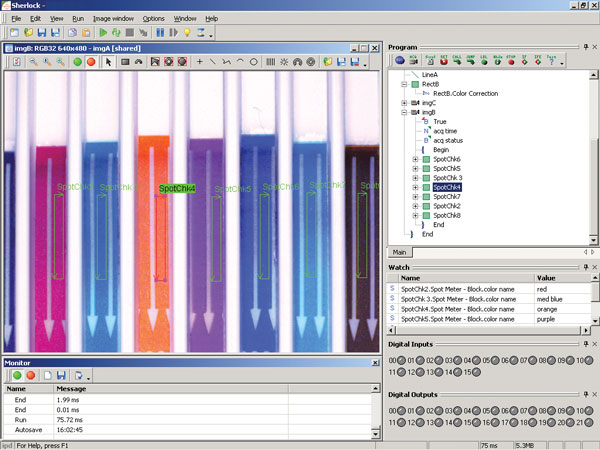1. EXECUTIVE SUMMARY
-
CVSS v3 7.3
- ATTENTION: Low skill level to exploit
- Vendor: Teledyne DALSA
- Equipment: Sherlock
- Vulnerability: Stack-based Buffer Overflow
2. RISK EVALUATION
Successful exploitation of this vulnerability could crash the device being accessed; a buffer overflow condition may allow remote code execution.
3. TECHNICAL DETAILS
3.1 AFFECTED PRODUCTS
The following versions of Sherlock, a machine vision software interface, are affected:
- Sherlock Version 7.2.7.4 and prior.
3.2 VULNERABILITY OVERVIEW
3.2.1 STACK-BASED BUFFER OVERFLOW CWE-121
A stack-based buffer overflow vulnerability has been identified, which may allow remote code execution.
CVE-2018-17930 has been assigned to this vulnerability. A CVSS v3 base score of 7.3 has been calculated; the CVSS vector string is (AV:L/AC:L/PR:L/UI:R/S:U/C:H/I:H/A:H).
3.3 BACKGROUND
- CRITICAL INFRASTRUCTURE SECTORS: Critical Manufacturing
- COUNTRIES/AREAS DEPLOYED: Worldwide
- COMPANY HEADQUARTERS LOCATION: Canada
3.4 RESEARCHER
Robert Hawes reported this vulnerability to NCCIC.
4. MITIGATIONS
Teledyne DALSA recommends users upgrade to Sherlock Version 7.2.7.5 or later. The latest update can be obtained from the following link:
https://www.teledynedalsa.com/en/products/imaging/vision-software/sherlock/
NCCIC recommends that users take the following measures to protect themselves from social engineering attacks:
- Do not click web links or open unsolicited attachments in email messages.
- Refer to Recognizing and Avoiding Email Scams for more information on avoiding email scams.
- Refer to Avoiding Social Engineering and Phishing Attacks for more information on social engineering attacks.
NCCIC reminds organizations to perform proper impact analysis and risk assessment prior to deploying defensive measures.
NCCIC also provides a section for control systems security recommended practices on the ICS-CERT web page. Several recommended practices are available for reading and download, including Improving Industrial Control Systems Cybersecurity with Defense-in-Depth Strategies.
Additional mitigation guidance and recommended practices are publicly available on the ICS-CERT website in the Technical Information Paper, ICS-TIP-12-146-01B–Targeted Cyber Intrusion Detection and Mitigation Strategies.
Organizations observing any suspected malicious activity should follow their established internal procedures and report their findings to NCCIC for tracking and correlation against other incidents.
No known public exploits specifically target this vulnerability. This vulnerability is not exploitable remotely.
Source:
https://ics-cert.us-cert.gov/advisories/ICSA-18-324-01
